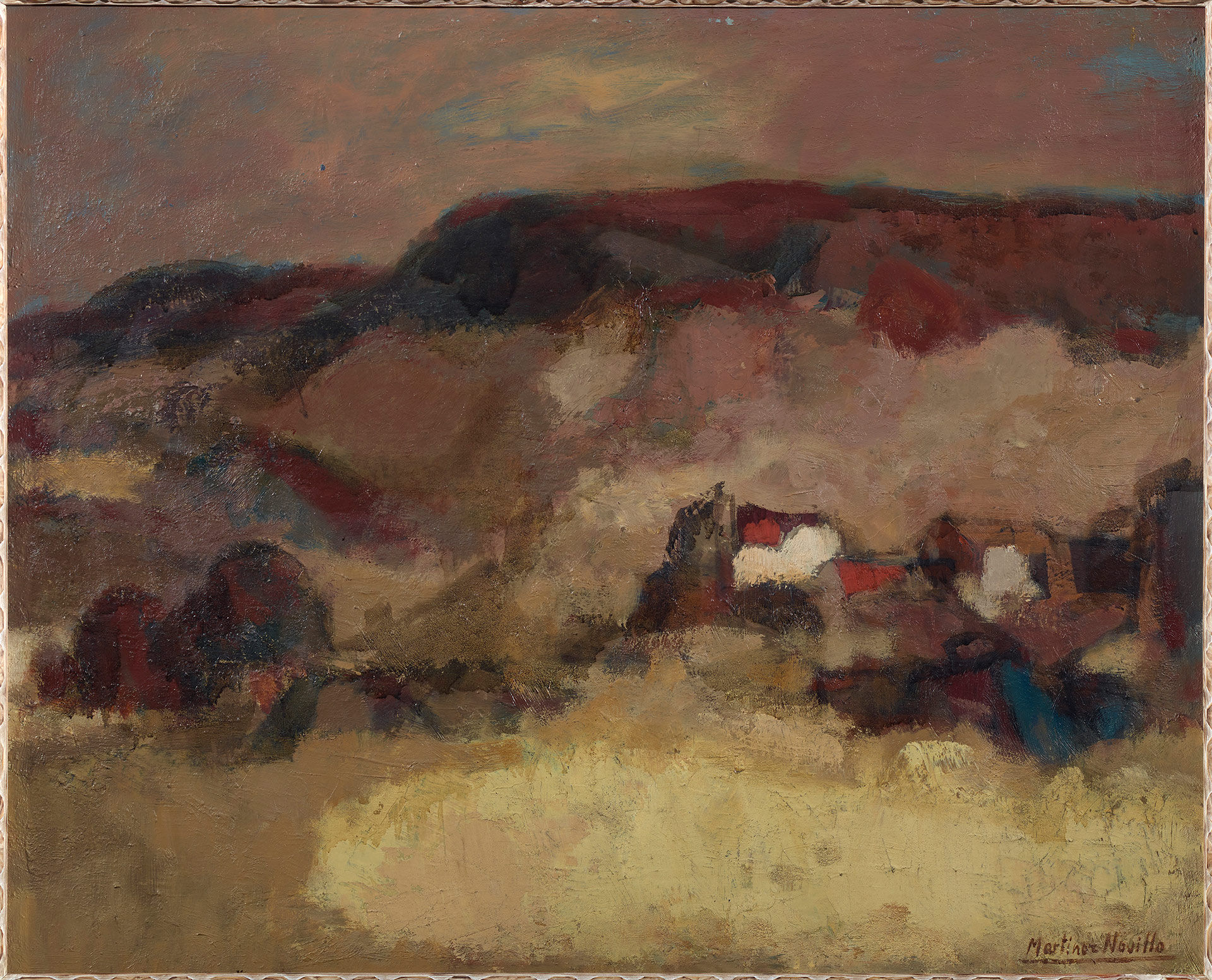
Cirilo Martínez Novillo (Madrid, 1921-2008)
Landscape
1966
WORK INFORMATION
Oil on canvas, 81 x 100 cm
OTHER INFORMATION
Signed in the lower right-hand corner: "Martínez Novillo"
The artistic universe of Cirilo Martínez Novillo, which can be situated within the classic pictorial genres (landscape, still life, portraiture, etc.), is the result of a constant quest for the essential, a long road towards simplification or the art of stripping away the expendable. Born in the Madrid neighbourhood of Vallecas, he began his education at the Madrid School of Arts and Crafts, and during the Civil War he enrolled in the Advanced School of Painting, where he was taught by Daniel Vázquez Díaz. There he met some of the painters associated with the Madrid School: Álvaro Delgado, Gregorio del Olmo, Luis García Ochoa and Francisco San José. United by their similar age and experiences, to an extent they shared features of an original identity, such as their new way of feeling the Castilian landscape, but they also presented significant differences that grew more pronounced over time. In 1954 Martínez Novillo met Benjamín Palencia who, though not part of the second Vallecas School, was one of the painters who most influenced his career (the other being Vázquez Díaz). In the 1950s and 60s he visited Paris several times thanks to different grants; one of them, awarded by Fundación Juan March, allowed him to study engraving at the workshop of W. Hayter.
Martínez Novillo was never a plein-air painter, preferring to take notes out in nature and later recreate his impressions in the studio. The three landscapes from 1966 in the Banco Santander Collection are characterised by clear, bold drawing and matter-heavy impasto with sharply outlined contours, in the manner of Georges Rouault. The painter systematically avoided the superficial, despite the seeming irrelevance of his chosen theme, and revealed a core of very solid profiles behind the veil of appearances.
Starting in the late 1960s, Martínez Novillo radically purged his colours and themes, leaving only the slightest, almost incidental references to reality, as we see in Paisaje con figuras [Landscape with Figures] and Paisaje castellano [Castilian Landscape]. The artist chose to organise the pictorial space by concentrating the central themes on the horizon line, as in Caminantes [Walkers], where the amber light heightens the dramatic quality of the cloud-studded sky. This process of essentialisation continued on its course with a drastic reduction in figurative reference points; the landscapes became dominated by vast spaces and immense voids, and light played an increasingly important role in defining these elements. For instance, Caserío [Houses] invites peaceful meditation but without losing the force of his early works, eloquently illustrating the painter's exercise in restraint and purification. [Genoveva Tusell García]

